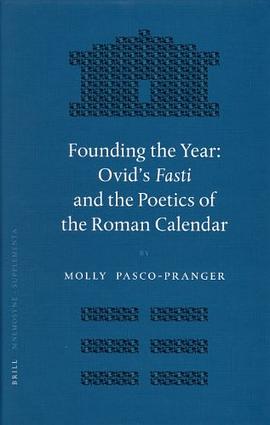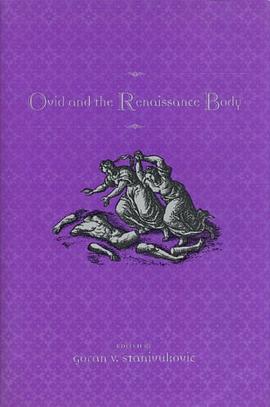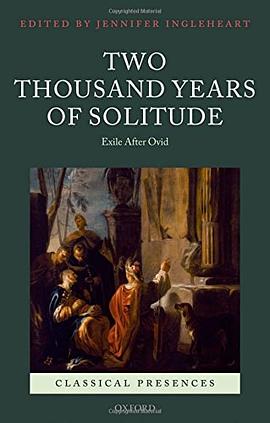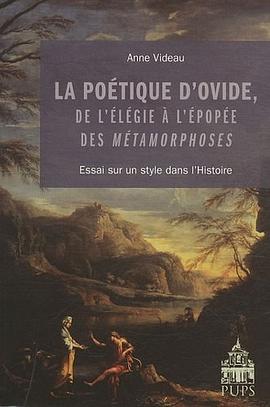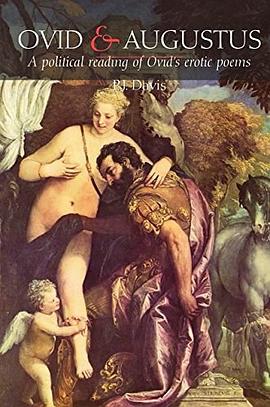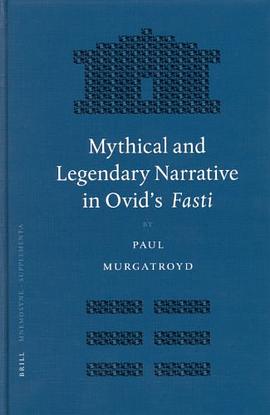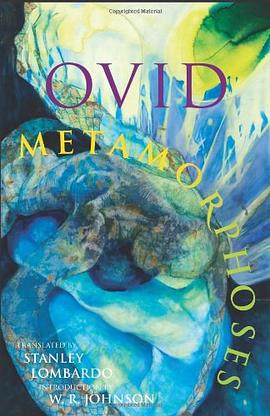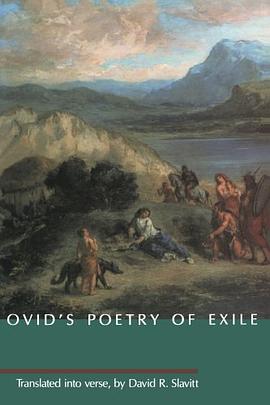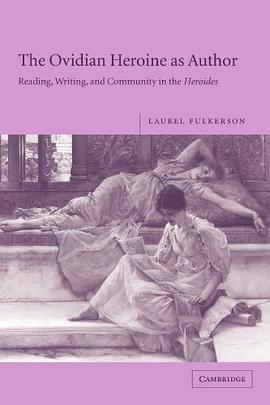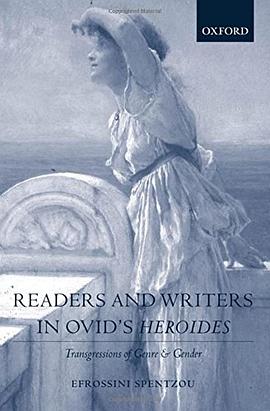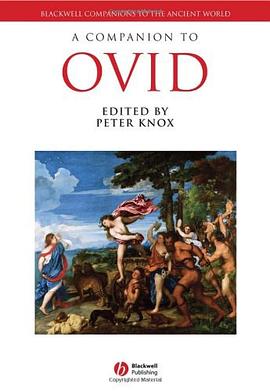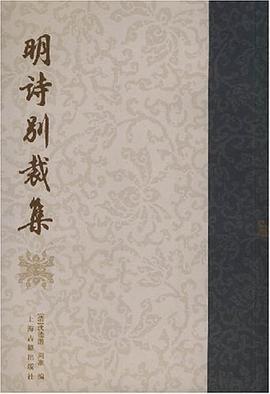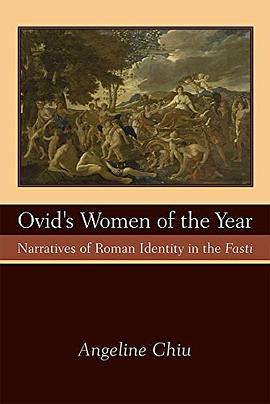

Chiu’s book explores the vast array of female figures in Ovid’s Fasti, ranging from Lucretia to Livia, Flora to Vesta, and including the mortal women in the City who provide information to the antiquarian poet—a garrulous old woman; the flaminica Dialis. While some of these have been extensively studied by others, Chiu is the first to embrace the whole cast of characters in a single study. Her aim is to show how Ovid develops these “calendar girls” as part of an agenda to broaden and otherwise complicate the picture of Roman identity. The book is organized as a series of four chapter-length engagements with important contemporaries: Livy’s History, Virgil’s Aeneid, Augustus, and Ovid’s own earlier poetry. The intertextual project of close readings Chiu describes modestly, but accurately, as “more impressionistic and suggestive than comprehensive or conclusive.”
Ch. 1 shows how four cases of heroic exemplarity in Livy are reformulated in tone and perspective by women’s stories in Ovid. In Livy’s narrative of the plebeian secession to the Mons Sacer in 494 BCE, the central figure is Menenius Agrippa, the patricians’ emissary who restores order through his parable of the parts of the body. In the same circumstances Ovid features instead an old baker from Bovillae named Anna, who rescues the ill-supplied plebeians with her rustic cakes. Anna is not only expressive of the poetics of the Fasti, akin as she is to figures in Callimachus’ Hecale and the Copa; in contradistinction to the lofty oratorical vision of Livy’s Menenius Agrippa, and the male political world in which he operates, the aged baker also represents a lower side of Romanitas comfortable with social separation. In Fasti 6 Ovid reports his own encounter with another old woman, who volunteers to him an explanation for the surprising sight of a matron entering the Forum barefoot. Chiu less successfully argues that this episode resonates with Livy’s aitia for the Lacus Curtius—two tales of masculine courage—simply because the anus mentions the Lacus as part of the changed landscape of the Forum (along with the Velabrum). More compellingly demonstrated is how Ovid refashions two of Livy’s exemplary women, in both cases by highlighting erotic elements. Claudia Quinta, a paragon of chastity whose virtue was questioned until her religious service at Cybele’s arrival in Rome, is treated cursorily by Livy. Ovid moves her to center stage, so that the narrative culminates even more in the confirmation of her virtue than in the Great Mother’s welcome. Moreover, Ovid brings her to life by styling Claudia a docta puella—beautiful, well-coiffed, confidently rejecting her critics—and in the process complicates the traditional notion of female exemplarity with elegiac sensibilities. Likewise, Ovid’s Lucretia is an elegiac woman and more finely drawn than her counterpart in Livy Book 1. This analysis may tendentiously flatten Livy’s heroine in setting up Ovid’s emulation—“the speech of a plaster saint,” “charmless” (why do we expect charm here?). But in other respects Chiu brings out well Ovid’s tragic version and nicely differentiates the competing modes of exemplarity.
Ch. 2 is a series of case studies of female characters from the Aeneid whom the Fasti develops along different lines. A favorite Ovidian technique is to exploit gaps in a predecessor text. Carmentis, honored at the Carmentalia in January, is a classic instance. Twice mentioned very briefly in the Aeneid, Evander’s mother emerges as a major figure in the Fasti, delivering an expansive prophecy as a prequel to the settled times at Pallanteum in Aeneid 8, and looming larger than her immature son. Dido’s sister Anna furnishes the opportunity for a sequel to the Aeneid as Ovid tells of her ‘Annaid,’ her journey from Carthage to Italy and her encounter there with Aeneas and Lavinia. The latter’s suspicion of a love affair between her husband and the new arrival may derive from the Varronian tradition that Anna loved Aeneas (not mentioned by Chiu), but Ovid’s expansive story engages principally with the Aeneid—Anna incorporates elements of the Virgilian Dido and Aeneas both; Lavinia’s mad hatred of Anna recalls her mother Amata’s hostility to the newcomer Aeneas; Dido’s ghost warns Anna as the dead Hector appeared to Aeneas. In this scenario, Lavinia, now the full-blown character that she is not in the Aeneid, becomes a jealous and vengeful wife, while the heroism of Aeneas dissolves into a near farce. Finally, the brief reference in Aeneid 12 that Jupiter rewarded Juturna with divinity after he bedded her Ovid spins into a “false prequel” where, already a nymph, Juturna rejects Jupiter’s advances. The high drama of Turnus’ fate drops away along with the lofty project of Rome eventually reconciled by the Virgilian Jupiter and Juno, who instead here engage in a tawdry domestic conflict over Jupiter’s latest love. In all these cases, Chiu argues, Ovid destabilizes and otherwise complicates Virgil’s monumentalizing epic.
Ch. 3 examines Ovid’s perspectives on Augustan realities. It is interesting to contextualize the rites added through history via female initiatives against the emperor’s addition of days to the calendar that is programmatically mentioned in the proem. The new Augustan honors for Vesta are shown, in the Fasti, to be at the expense of other goddesses like Venus and Flora. Chiu aligns Ovid’s panegyrical treatment of Livia with his highlighting of mythological foundress figures, Hersilia and Egeria, the wives of Romulus and Numa respectively, two kings in some respect analogous to Augustus. It is not clear to me, however, how their tales diminish the dignity of their royal husbands in Ovid’s telling. Likewise, in the references to Livia herself, the text suggests that there is a lot of glory to go around rather than that she “overshadows” Tiberius and Augustus. Ovid certainly accentuates Livia with closural effects giving her pride of place. At 1.535–36, however, the remarkable final prediction of her future divinity as Iulia Augusta, alongside that of the speaking prophetess Carmentis, positions Livia among the Augusti (members of the imperial family) in 531 upon whom Rome’s guardianship depends, and alongside, rather than overshadowing or undercutting, the divinely accented Tiberius and Augustus—or Augustus and Julius (the unclear references suggest the familial mirroring of excellences)—cf. natusque dei; caelesti mente. Later in Book 1 Livia once again concludes Ovid’s account of Concordia’s temple, rededicated by Tiberius. Here the couplet does feel like a coda, with Livia’s quasi–divine status, the logical afterthought of her own dedication (an ara) in view of the event being celebrated, and her fabricated honor as sola vis-à-vis Augustus (= univira). Even so, she is thus praised in an extended apostrophe to the victorious, pious Tiberius, whose glory seems complemented rather than “oddly overshadowed” by his mother. Livia’s mention at the end of the Bona Dea entry at 5.148–58 is taken to substitute the imperial honorand for a goddess who would have been potentially unwelcome to the regime. This begs the question of why Livia would have restored such a temple; here she does neatly cap the shrine’s history and make a compelling counterpart to the Vestal who made the original dedication (cf. the virtue of both; nominis heres). One wonders, too, about a possible relevance of Ovid’s exile to his treatment of Livia in the Fasti.
Ch. 4 is “Song of Myself: Revis(it)ing Love Elegy.” Chiu breaks new ground in her analysis of Janus and Carna (Bk. 6), particularly in uncovering hints of amor already in Janus’ appearance in Bk. 1. Elements of love elegy are excavated in Fortuna and Servius Tullius, the important programmatic dialog with Venus at the start of Bk. 4, and the grand panel for the Floralia. In all this, love elegy is more revisited than revised. One should note, for instance, that, alongside her elegiac features, Ovid’s Flora is at the same time the stately goddess called mater also in cult, a mediating figure who encapsulates the poem’s new kind of elegy. Recourse to elegy seems out of place in reading Ovid’s meeting with the flaminica concerning the proper time for his daughter’s wedding. The poet’s need to learn about marriage hardly conjures up his opposite number in the confident teacher of love in the Ars. The inquisitive persona is rather all of a piece with Ovid as searcher into religious antiquities, even if the reason is now more personal.
In her focus on the Fasti’s ideological and generic revisions and collisions, Chiu follows in the tradition of Carole Newlands’ Playing with Time (1995) and Alessandro Barchiesi’s The Poet and the Prince (1997). Her Conclusion restates the poem’s dynamic in terms of the flexibility and mutability of Roman identity in Ovid’s hands. A kind of emblem for his mindset is his address to the reader when introducing the multiple etymologies for June: ipse leges, “you yourself will choose.”
Throughout Chiu offers many original observations. The numerous subject headings reflecting popular culture suggest the relish with which she approaches the topic—e.g. Fatal Attraction, Sister Act, The Way We Were, Father of the Bride, The Good Wife, Vesta’d Interests. The Bibliography is full but not always easy to use, with multiple titles by a single author organized alphabetically rather than chronologically. Quoted Latin is either translated or summarized. All in all, students of Ovid’s Fasti will be grateful for this investigation of the poem’s female figures.
具體描述
讀後感
評分
評分
評分
評分
用戶評價
通過比較fasti中的女性形象與李維和維吉爾的版本,顯示瞭奧維德如何打破關於羅馬人身份的單一權威敘事。分析瞭Vesta和Concordia與奧古斯都政策的關係。還列舉瞭fasti與奧維德哀歌作品的互文。
评分通過比較fasti中的女性形象與李維和維吉爾的版本,顯示瞭奧維德如何打破關於羅馬人身份的單一權威敘事。分析瞭Vesta和Concordia與奧古斯都政策的關係。還列舉瞭fasti與奧維德哀歌作品的互文。
评分通過比較fasti中的女性形象與李維和維吉爾的版本,顯示瞭奧維德如何打破關於羅馬人身份的單一權威敘事。分析瞭Vesta和Concordia與奧古斯都政策的關係。還列舉瞭fasti與奧維德哀歌作品的互文。
评分通過比較fasti中的女性形象與李維和維吉爾的版本,顯示瞭奧維德如何打破關於羅馬人身份的單一權威敘事。分析瞭Vesta和Concordia與奧古斯都政策的關係。還列舉瞭fasti與奧維德哀歌作品的互文。
评分通過比較fasti中的女性形象與李維和維吉爾的版本,顯示瞭奧維德如何打破關於羅馬人身份的單一權威敘事。分析瞭Vesta和Concordia與奧古斯都政策的關係。還列舉瞭fasti與奧維德哀歌作品的互文。
相關圖書
本站所有內容均為互聯網搜索引擎提供的公開搜索信息,本站不存儲任何數據與內容,任何內容與數據均與本站無關,如有需要請聯繫相關搜索引擎包括但不限於百度,google,bing,sogou 等
© 2025 qciss.net All Rights Reserved. 小哈圖書下載中心 版权所有

